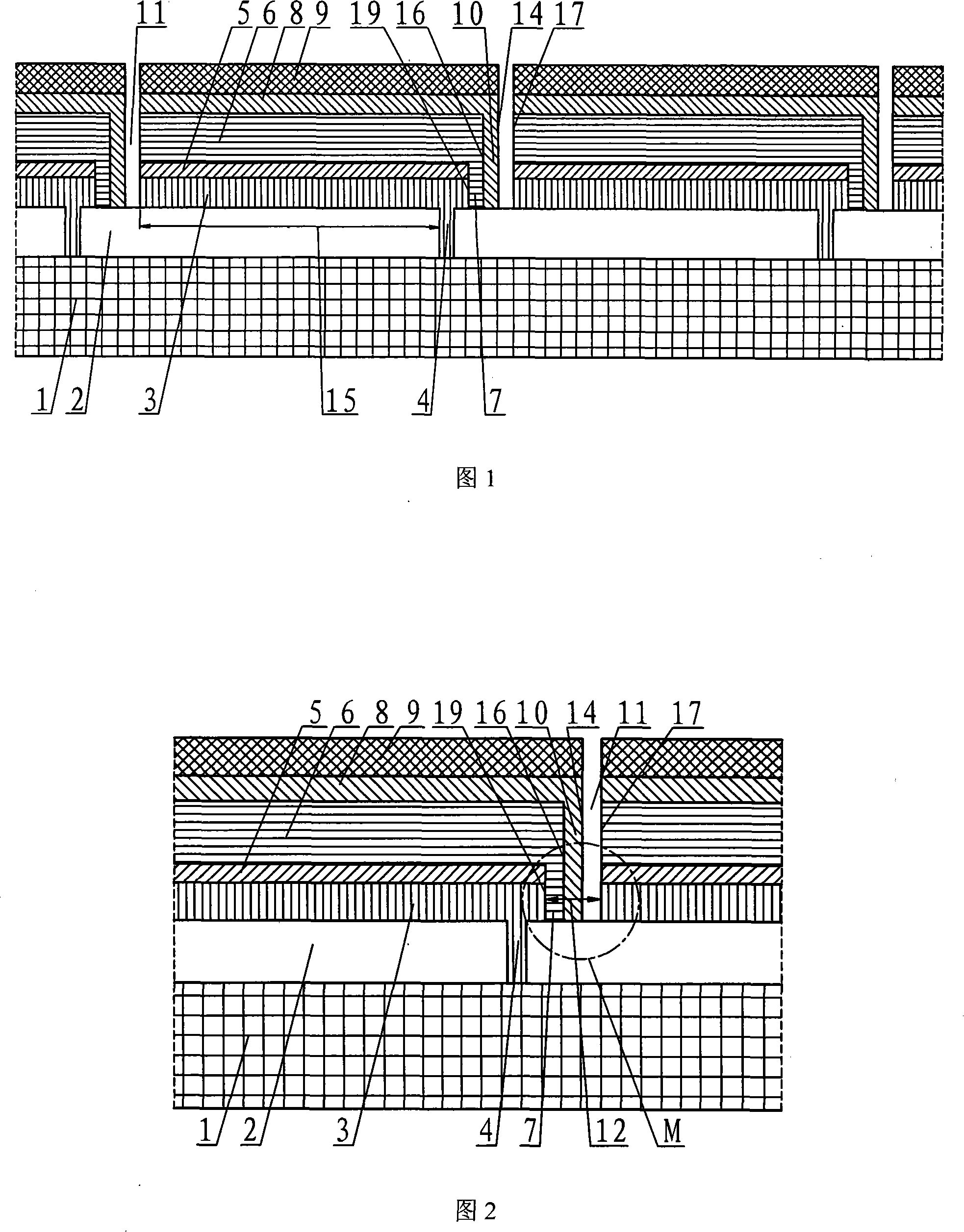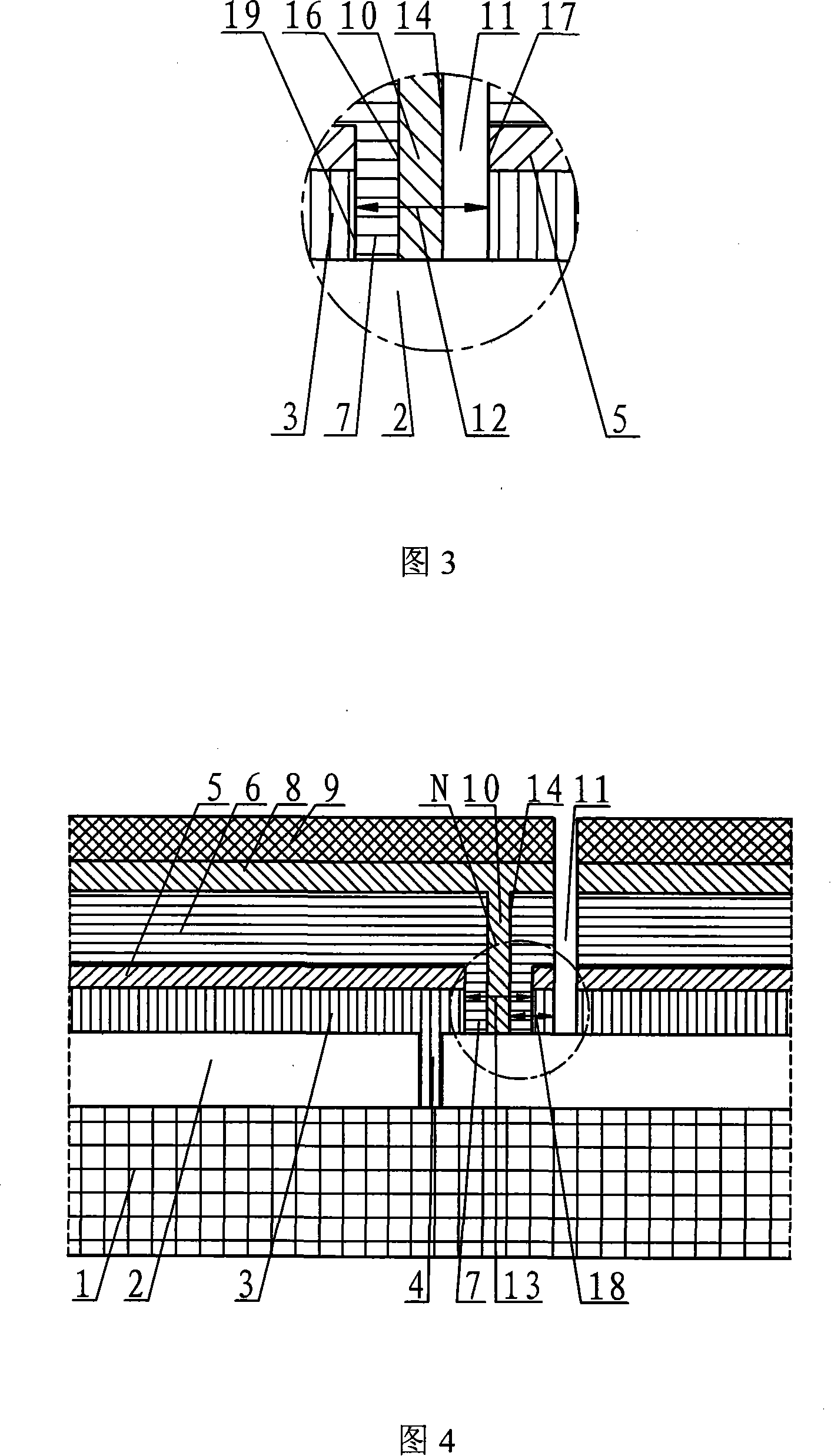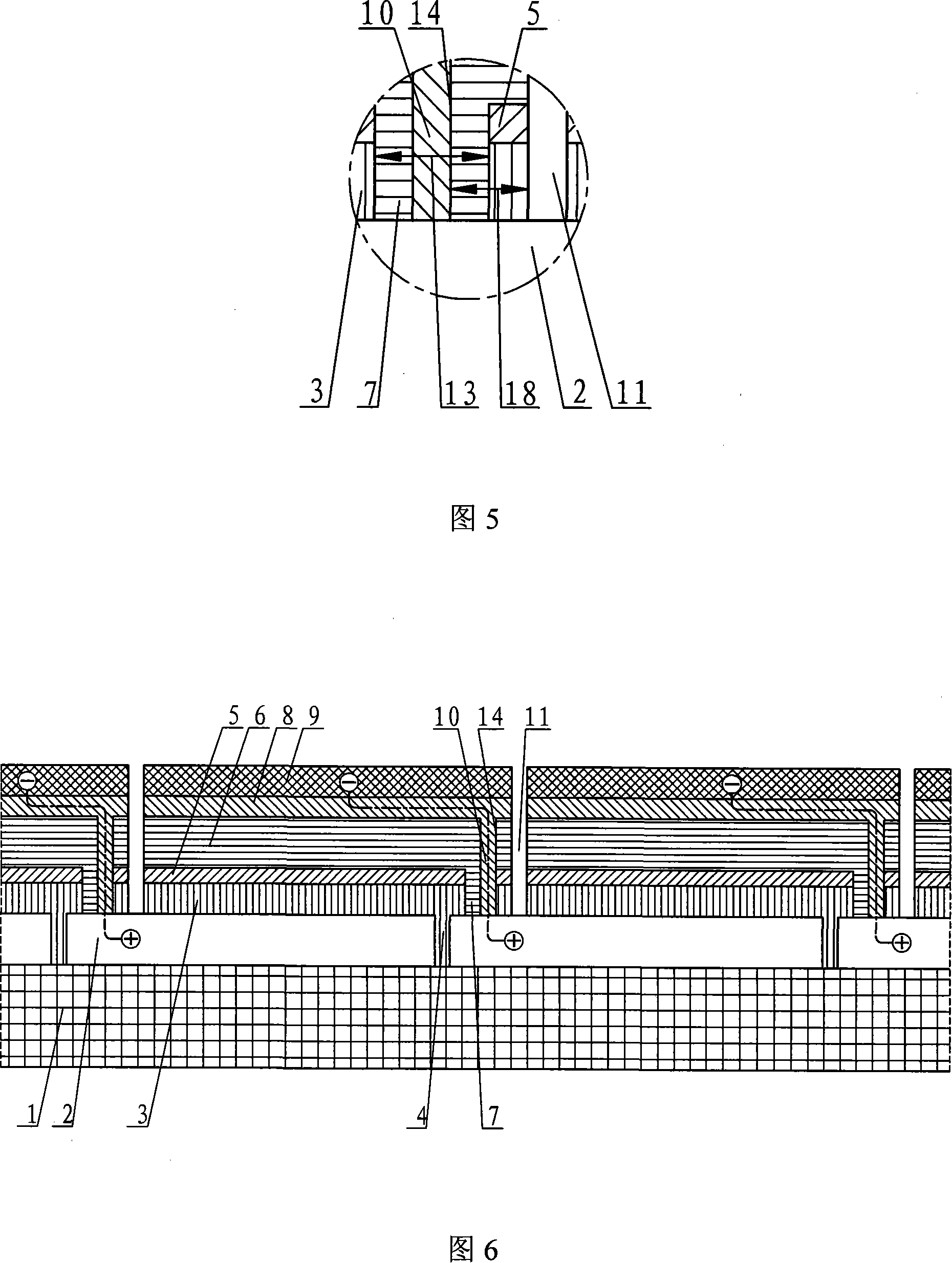Solar cell and manufacturing method
A solar cell and manufacturing method technology, applied in the direction of final product manufacturing, sustainable manufacturing/processing, semiconductor/solid-state device manufacturing, etc., can solve the problem of easy formation of mirror film layer, inability to directly form suede film layer, increase process complexity, etc. problems, to achieve the effect of reducing production equipment investment, low production cost and high production efficiency
- Summary
- Abstract
- Description
- Claims
- Application Information
AI Technical Summary
Problems solved by technology
Method used
Image
Examples
example 1
[0061] 1. Scribe the transparent conductive film 2 with a laser scribing method with a size of 14″×48″ or larger in accordance with the electrical performance requirements of the battery panel, with a scribing interval of 20 mm.
[0062] 2. Using plasma chemical vapor deposition (PECVD) at deposition pressures of 70Pa (P layer), 50Pa (I layer) and 80Pa (N layer) at a substrate temperature of 220°C, on the scribed transparent conductive glass in sequence Deposit the P, I, N layers of amorphous silicon of the top cell 3 with a thickness of 80 Ȧ, 700 Ȧ and 200 Ȧ respectively.
[0063] 3. Apply a layer of ITO transparent conductive paste layer 5 with a thickness of 1100 Ȧ on the deposited top cell P, I, N layers of amorphous silicon film 3 by using a high-precision roller rubber machine.
[0064] 4. At a temperature of 150° C., the glass plate coated with the ITO transparent conductive paste 5 is preliminarily cured and baked for 40 minutes.
[0065] 5. Scribe the isolation trenc...
example 2
[0072] Only change the thickness of the ITO transparent conductive paste in step 3 and step 8 in example 1, and the rest of the steps are the same as in example 1:
[0073] 3. A layer of ITO transparent conductive layer 5 with a slurry thickness of 900 Ȧ is coated on the N film surface of the deposited top battery 3 by using a high-precision roller glue machine.
[0074] 8. Roll-coat a second layer of ITO transparent conductive film 8 with a thickness of 1000 Ȧ on the film surface of the N layer of the bottom battery 6 that has been laser-marked, and cure and bake at 150° C. for 40 minutes.
example 3
[0076] Only change the width of the laser scribe line in step 5 and step 7 of example 1, and the rest of the steps are the same as example 1.
[0077] 5. The laser scriber scribes the isolation trench 7 for insulation, and the laser penetrates the amorphous silicon film layer of the top cell 3 and the transparent conductive reflection layer 5 to perform continuous laser scribing to form the isolation trench 7 with a width of 0.4 mm.
[0078] 7. The laser scriber marks the groove 10 for the electrode connection line, and the glass plate that has already made the P, I, N layers of non-silicon film 6 of the bottom battery is isolated along the laser formed in step 5 with a laser machine. The corresponding position of the channel 7 is used to perform laser scribing on the film layers of the top and bottom cells, and the laser penetrates the P, I, and N layers of amorphous silicon films of the top cell, the middle transparent conductive layer, and the P, I, and N layers of the botto...
PUM
| Property | Measurement | Unit |
|---|---|---|
| thickness | aaaaa | aaaaa |
| thickness | aaaaa | aaaaa |
| thickness | aaaaa | aaaaa |
Abstract
Description
Claims
Application Information
 Login to View More
Login to View More - R&D
- Intellectual Property
- Life Sciences
- Materials
- Tech Scout
- Unparalleled Data Quality
- Higher Quality Content
- 60% Fewer Hallucinations
Browse by: Latest US Patents, China's latest patents, Technical Efficacy Thesaurus, Application Domain, Technology Topic, Popular Technical Reports.
© 2025 PatSnap. All rights reserved.Legal|Privacy policy|Modern Slavery Act Transparency Statement|Sitemap|About US| Contact US: help@patsnap.com



